Looking for the best ESL books for you and your students? Look no further!
In this post, you'll discover ESL books to teach everyone from young learners taking their first steps in English, to advanced learners who want to use collocations in English correctly.
Many of the books in this list will also help you to develop as a teacher and learn how to teach specific aspects of English or prepare for an English teaching certification.
Pro Tip
If you want to become a qualified online language teacher and earn a living from home, I recommend checking out CeOLT (Certificate of Online Language Teaching).
Books For ESL Young Learners
Let’s start off this list with a few textbook recommendations for younger learners. The ESL books in the section will be suitable for use with young learners at primary or grade school level as well as with older students at secondary level.
1. New Close-Up

Authors: Katherine Stannett, Ingrid Wisniewska, Louisa Essenhigh, Jeremy Day
Levels: A2 to B2+
New Close-up is for students at secondary school and helps them prepare for international exams as well as their future careers.
As the book is published by National Geographic Learning (like several others on this list), it includes photos, videos and stories from National Geographic to make it more engaging.
The syllabus is based around the four skills and the book also includes lessons based around social and emotional learning
2. Perspectives

Authors: Daniel Barber, Hugh Dellar, Amanda Jeffries, Lewis Lansford, Andrew Walkley
levels : A2+ – C1
Each unit in Perspectives looks at a topic from at least four different perspectives so that students open their minds, develop their own perspectives and learn how to express their ideas in English.
The books also includes one Ted Talk per unit. You can get both a British and American version of the books.
Just like “New Close-up”, “Perspectives” develops the four skills as well as learners’ critical thinking skills.
3. Our World Second Edition

Authors: Gabrielle Pritchard, Diane Pinkley, Kate Cory-Wright, Ronald Scro, Rob Sved, Kaj Schwermer, Sue Harmes
Levels: Pre A1 to A2 (primary/young learners)
Our World is designed for learners at primary level and contains lots of project work and clear links to other school subjects.
Like the other National Geographic Learning ESL books, the series exists in both British and American English.
You can use the book with true beginners of English and the 7 levels in the series will take young learners up to A2 level. Again the books bring the world into the classroom to motivate young learners to use English.
4. Pen Pictures 1-3
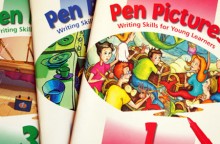
The Pen Pictures books by Mark Hancock and Annie McDonald are designed to develop young learners’ writing skills using pictures.
In book 1 learners will have the opportunity to write a dialogue, a poem, a notice, an advert, a postcard and a short composition.
In books two and three, they’ll start writing short stories and learn how to share their opinions in writing.
5. Singing Grammar
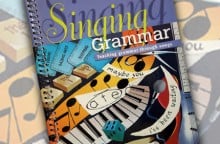
Singing Grammar is one of several ESL books on this list by Mark Hancock.
The idea behind this book, his second, is that songs get in our heads. So if children sing grammar songs, they’ll remember it better without having to “study”.
The book contains eighteen units covering eighteen different grammar points. You can photocopy the pages of each unit – one contains the song while the other is made up of practice exercises.
Books For ESL Adults
Now let’s turn to books for ESL adults. In this part of the list, you’ll find textbooks for all levels, from beginner to advanced, as well as books about developing skills such as listening and reading.
You’ll also find books to help you develop as a teacher and learn how to teach grammar and other aspects of the English language.
6. Cambridge English Empower
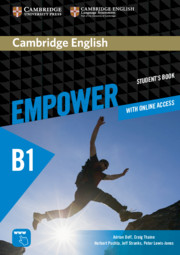
Levels: A2 – B2
Teacher Eleni Doss shared why she likes this book:
I’ve used so many books over the years and the ones that I’ve found work best are the ones that don’t pack their pages full of exercises and leave space for freer practice and speaking. For general English, especially for short courses I was quite impressed with the EMPOWER series by Cambridge, also for the above reasons. This was great for a student I had who had no time for homework and was meeting with me every day for two months. It helped him get fluent very fast.
Eleni Doss, CELTA & LCCI Certified Business English Teacher
7. English Collocations In Use Advanced
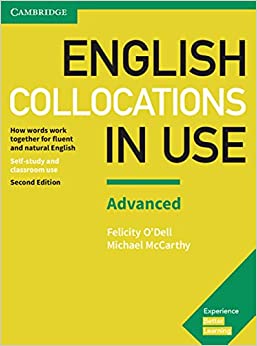
Authors: Felicity O'Dell, Michael McCarthy
Level: Advanced (C1-C2)
This recommendation came from TOEFL expert Anne Haggerson.
The subtitle of this book is: “How Words Work Together for Fluent and Natural English”.
That’s because collocations are words that usually appear together such as “heavy rain” or “play sport”.
These word combinations can be different in students’ native languages which leads to mistakes such as “strong rain” or “practise sport”.
In “English Collocations In Use” learners see collocations in context and get a chance to explore how they’re used.
This book comes with answers so students can use it for self-study. But it can also be adapted for use in class too. An intermediate version of this book is also available.
8. New English File
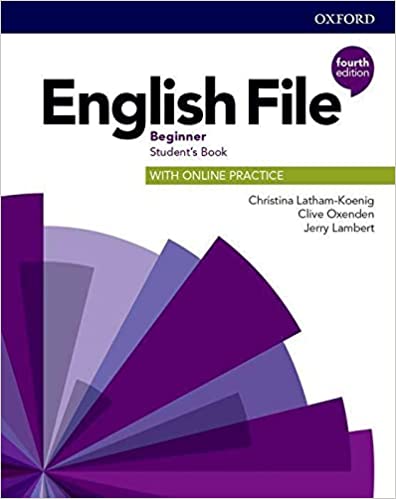
Levels: Beginner to advanced (A1-C2)
Teacher Ana Jovic talked to me about why she’s a fan of this series:
I love the New English File series which is for adult learners. They cover all levels from beginner to advanced plus. I guess they are the first to offer a level higher than advanced. These books have all sorts of activities for all types of learners and they cover all four skills (listening, speaking, reading, writing). It’s impossible to use everything but that’s why I like this series. I can pick and choose activities to suit my students’ needs whether they’re learning individually or in a group.
Ana Jovic, Language Specialist. English and Serbian Teacher. Native Speakerism-Buster. Heritage Language Advocate. PhD Candidate.
9. Cambridge Interchange
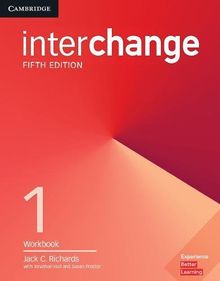
Authors: Jack C. Richards, Jonathan Hull, Susan Proctor
Levels: A1 – B1
At the time of writing, Cambridge Interchange is into its fifth edition and describes itself as “the world’s favourite English course”.
The Interchange series is designed for lower levels, from A1 to B1 and is written in American English.
The books are based on the communicative approach and say they will get students speaking from the first lesson.
You can download some sample units of the series on the Cambridge website to see if it’s right for you and your learners.
10. Cutting Edge
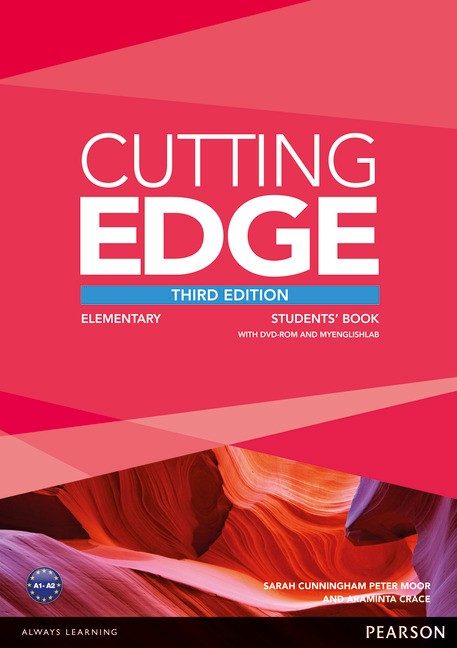
Levels: A1 – C1
Authors: Sarah Cunningham, Peter Moor
Here’s what English teacher Clare Whitmell from English-at-Home said about the “Cutting Edge” series.
I’ve used the Cutting Edge books in the past and liked them. They cover all skills, have useful revision pages, and can be easily adapted or extended. Topics covered are the usual suspects so it’s easy enough to find extra material if necessary.
Clare Whitmell
The downside of the “Cutting Edge” series is that the books only exist in British English. But they do use a task-based approach.
11. Voices
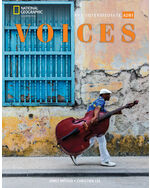
Levels: A1 to C1
Author: Emily Bryson, Gary Pathare, Chia Suan Chong, Lewis Lansford, Christien Lee, Daniel Barber, Marek Kiczkowiak
Voices is published by National Geographic Learning, and is up-to-date, globally focussed and contains a lot of authentic texts.
There are both American and British versions of the book available. But “Voices” aims to teach learners how to use English as a tool for global communication. The series is suitable for both adults and young adults.
If you’re interested in trying “Voices”, you’ll find sample units to download on the national Geographic Learning website.
12. Life, Second Edition
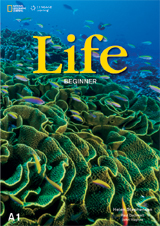
Author: John Hughes, Paul Dummett, Helen Stephenson
Levels: A1+ – C1
Life is also published by National Geographic Learning, and just like “Voices”, is up-to-date, globally focussed and contains plenty of authentic texts.
“Life” teaches all four skills plus grammar and vocabulary to adult and young adult learners alike.
What’s unique about this ESL book is that it features National Geographic content such as videos or photos which bring the world into your classroom.
The series aims to help learners become both critical thinkers and effective global communicators.
13. SpeakOut 2nd Edition
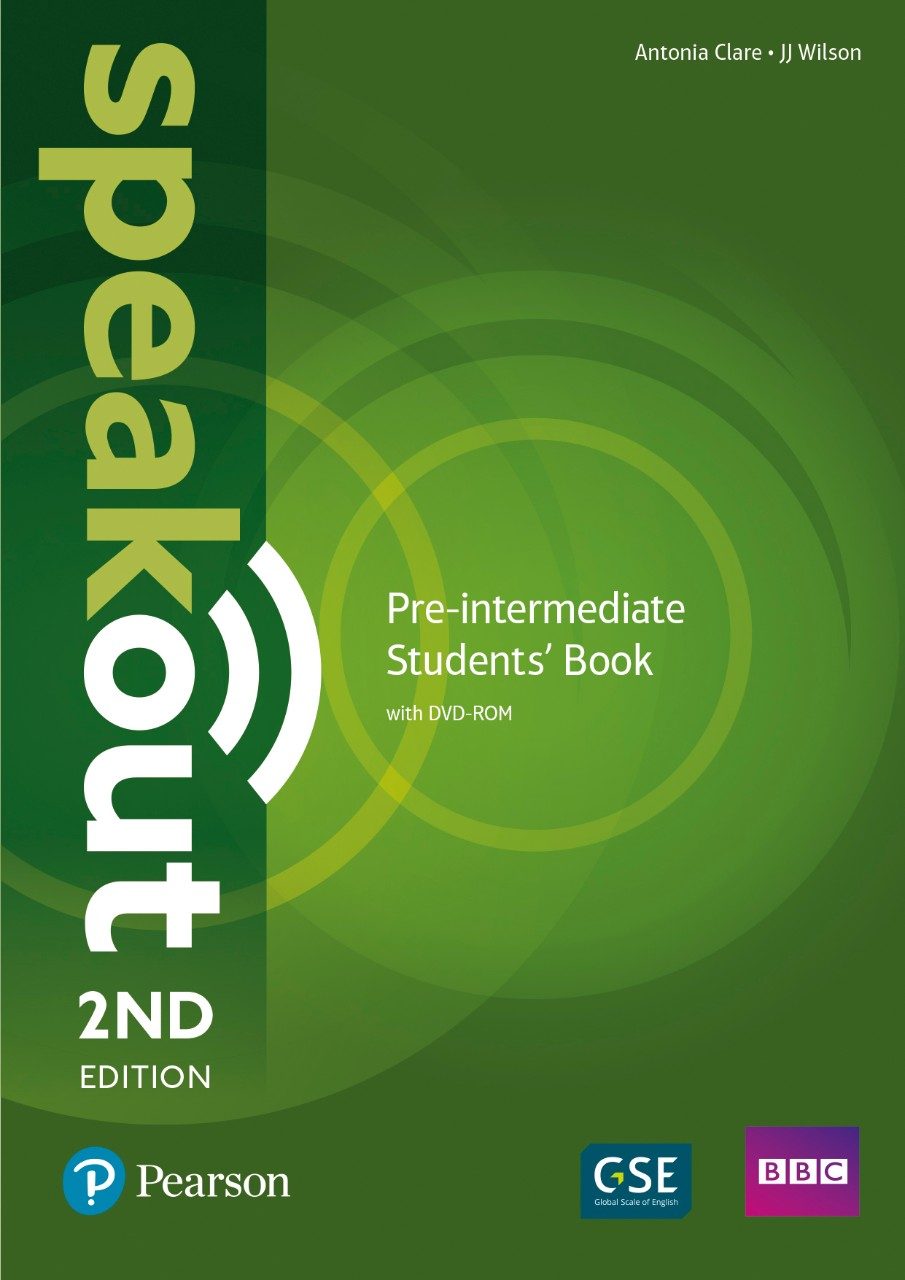
Author: Antonia Clare, Frances Eales, Steve Oakes and J.J. Wilson
Levels: A1 to C2
SpeakOut is a general English course that includes video content from the BBC including “on the street” interviews so learners can hear authentic English in a variety of accents.
The books cover all levels from beginner or “starter” as they call it all the way up to “advanced plus”. The series is suitable for both adults and young adults
You can download a sample of SpeakOut on the Pearson website.
14. The Extra Series (Speaking Extra, Reading Extra, Writing Extra, Listening Extra)
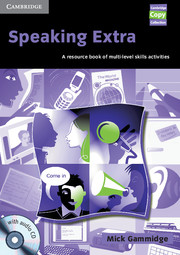
Authors: various
Levels: A2 – C1
I’m including all the books in the “Extra” series here as they’re excellent ESL books and they all link in with each other in terms of how they're organised by topic.
But the ones I've used most are “Reading Extra” and “Speaking Extra”.
The activities in these books are photocopiable and can be scanned for online ESL classes. In “Speaking Extra” you’ll find role play, problem solving, puzzles, games, interviews, storytelling and discussion.
“Reading Extra” features factual texts, newspaper articles, features and TV schedules, instruction manuals, everyday signs, stories, quizzes, emails and diary entries
The only downside is that the books are rather expensive so you may want to look for a second-hand version. That said, they’re so comprehensive that they’re a good investment that you’ll be able to use in your classes for years to come.
15. Whaddaya Say? Guided Practice in Relaxed Speech 2nd Edition
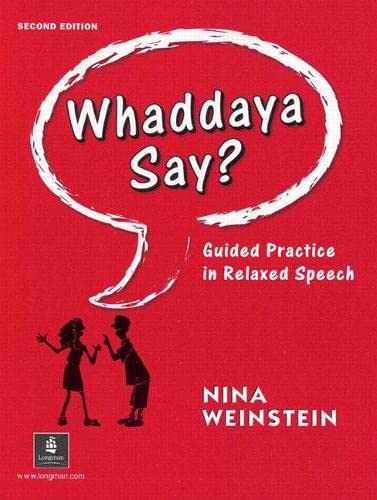
Author: Nina Weinstein
Levels: intermediate to high-intermediate (B1-B2)
Do your students struggle to understand native speakers when they talk fast? If so, they might benefit from Whaddaya Say?, especially if they’re learning American English.
The book introduces learners to the most common reduced forms such as “gotta”, “gonna” and many more.
In each of the 30 chapters, students listen to a slow version of the audio and then a fast one with the reduced forms. The audios are based on everyday conversational situations that learners might encounter in real life.
One thing that’s a bit annoying is that the book doesn’t come with the audio included. It was possible in the past to download it from Nina's website but it doesn’t seem to be online anymore.
16. English Grammar In Use
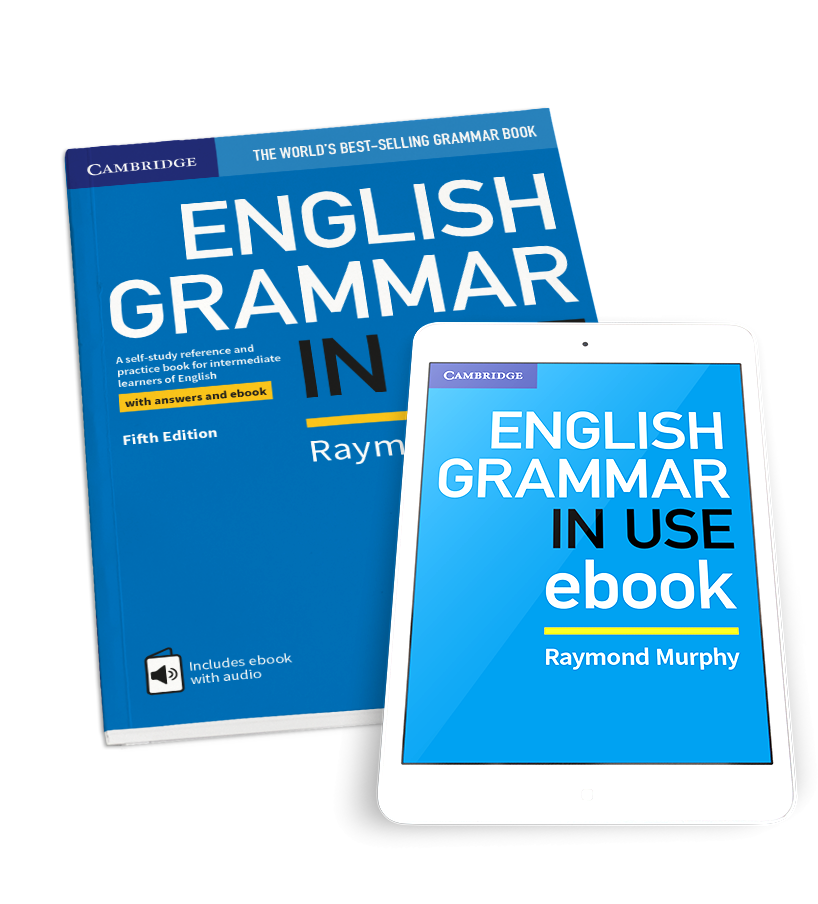
Level: intermediate (B1-B2)
Author: Raymond Murphy
English Grammar In Use needs no introduction as it’s probably the most famous English grammar book ever published!
The one teachers and students are most familiar with is the “blue one” which is the intermediate version. But the book also exists in low-intermediate (red) and advanced (green) editions.
These books are actually designed for self-study. Each unit is divided into two parts. On the left hand side is a clear explanation of each grammar point with simple language and illustrations. And on the right there are exercises to complete.
That said, the author explains that teachers can use this book for revision or practice. The exercises aren’t presented in order of difficulty so you’ll have to select the areas your students need more help with.
You can also use the left pages as a grammar reference book for yourself when you need to brush up on a grammar point before teaching it.
The most recent editions also include eBook versions so that students can listen to the example sentences.
17. English Pronunciation In Use
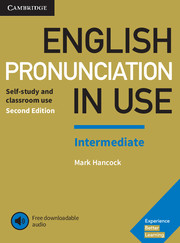
Level: Intermediate (B1-B2)
Author: Mark Hancock
English pronunciation in Use is focused, unsurprisingly, on pronunciation and is suitable for both self-study and classroom use.
The good news is that this book comes with the audio included, either a CD and CD-rom in the case of the first edition or downloadable audio for the second edition.
Thanks to “English Pronunciation in Use”, learners will become confident with all areas of English pronunciation, including individual sounds, word stress, connected speech and intonation.
This book will be especially useful for students learning British English, but there’s also more of a focus on international English in the second edition.
18. Pronunciation Games
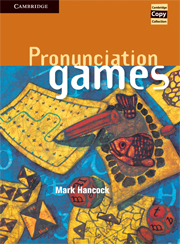
Level: all levels
Author: Mark Hancock
I’m including another Mark Hancock book, Pronunciation Games, as the pages are photocopiable and can be scanned for use in online ESL lessons.
Like “English Pronunciation In Use”, learners will discover different aspects of English pronunciation such as individual sounds and word stress to sentence stress and intonation. But in this book the focus is on developing awareness of pronunciation through games.
On his website Mark Hancock explains that the aim of Pronunciation Games was to “make pronunciation less daunting and more fun”. This was his first book and it was so well-received that it won the Frank Bell Prize for a first-time ELT author.
19. Breaking The Sound Barrier: Teaching Language Learners How to Listen
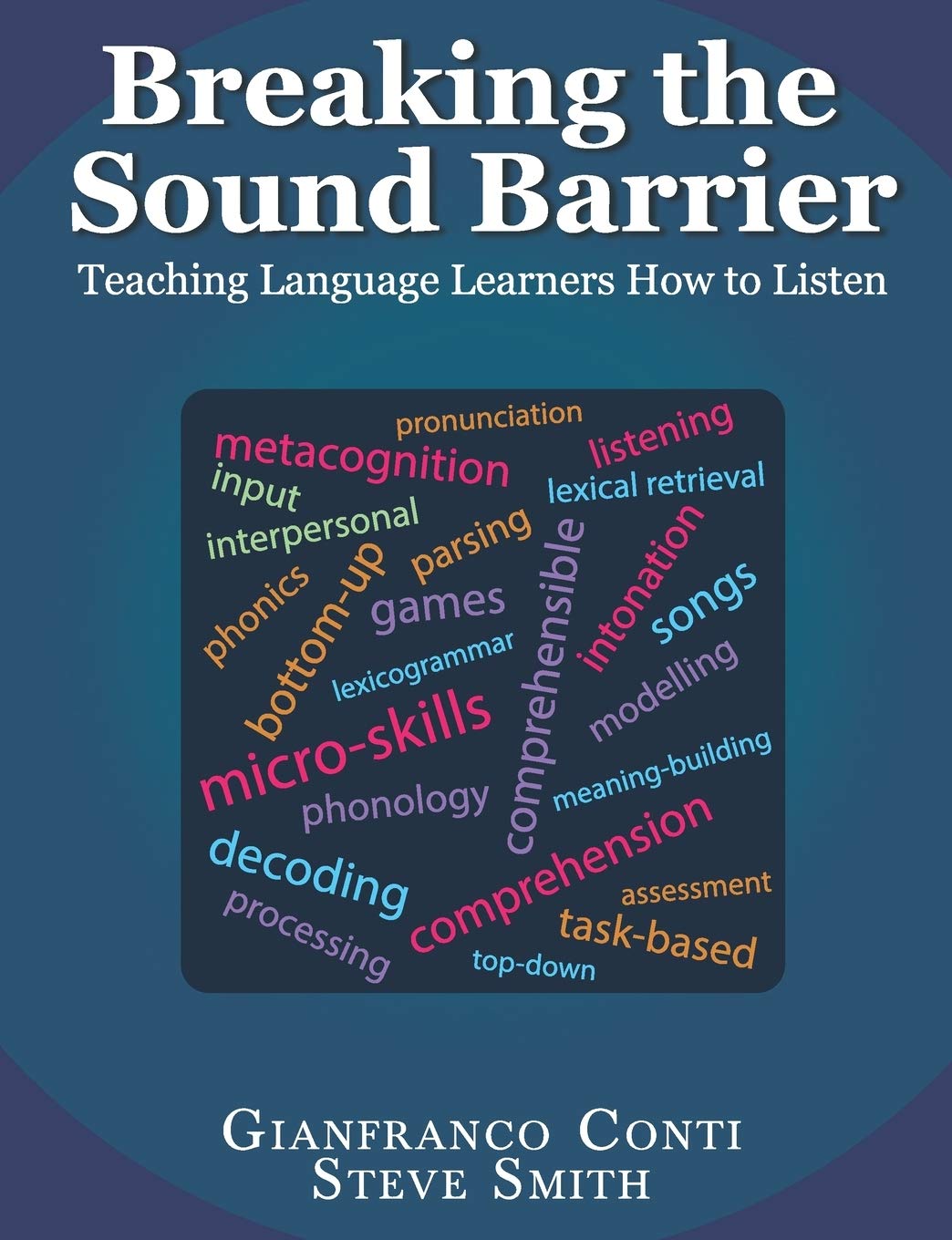
Level : A1 – B2 (designed for modern foreign language teachers in secondary schools but can be adapted for use in an ESL context)
Authors: Gianfranco Conti and Steve Smith
Breaking the Sound Barrier is all about how to teach listening skills and is designed for both new and experienced teachers.
The audience is language teachers working in secondary school contexts teaching foreign languages (French, German, Spanish etc).
But ESL teachers will also be able to adapt the activities and learn much about theory and principles of listening teaching, beyond the ask a few comprehension questions model.
You’ll find over 200 practical classroom activities to use with students in this book as well as ideas for lesson sequences. The authors’ goal is to help students become more effective listeners by encouraging teachers to put listening at the forefront of lesson planning.
20. Learning Teaching
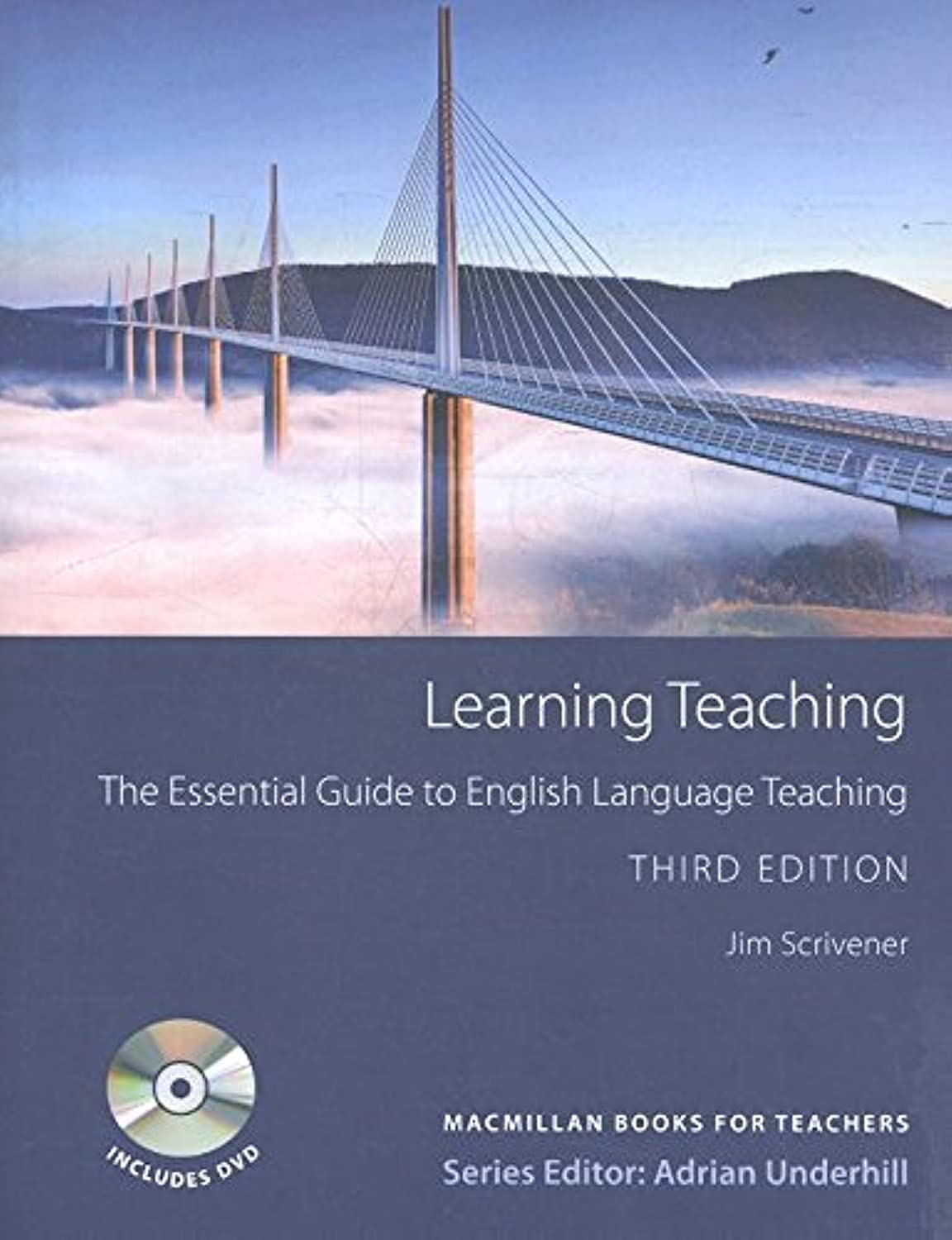
Author: Jim Scrivener
Learning Teaching is a classic handbook for beginning English language teachers and will continue to be useful to you in your first years of teaching.
It was first published in 1994 and is now into its third edition, a testament to its enduring popularity with beginning teachers.
The third edition comes with a DVD so that you can observe a full lesson. It will be a useful accompaniment to any teaching certification.
21. Learning To Teach English: A Practical Introduction For New Teachers
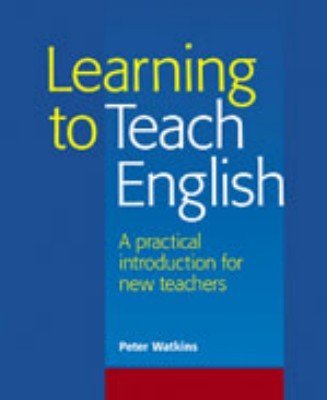
Author: Peter Watkins
This slim but comprehensive book is a must-read for any and all beginning ESL teachers. You can read Learning to Teach English before or during a teacher training course such as CeOLT.
You’ll find example lesson plans plus photocopiable material to go with them as well as a section on basic grammar terminology and verb forms.
Over 18 chapters, the book covers key areas of teaching such as error correction, classroom management, learner independence and teaching reading skills.
22. Listening In The Language Classroom
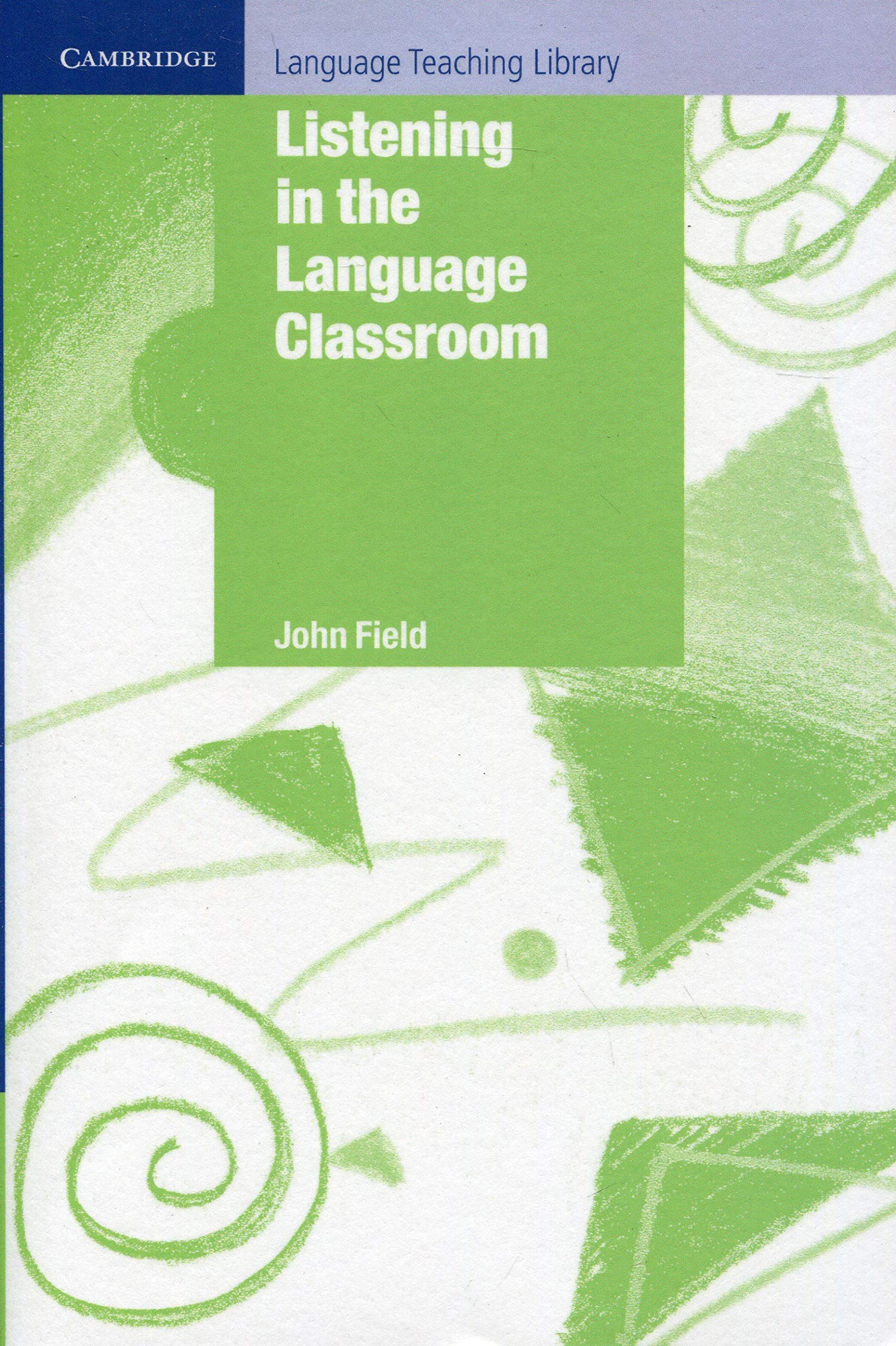
Author: John Field
Listening in the Language Classroom continues to make waves in the years since it was published in 2008.
Much like “Breaking the Sound Barrier”, the book challenges the traditional approach to teaching listening where learners listen to some audio and then answer comprehension questions.
The book focuses on the process of listening rather than the product i.e answering comprehension questions correctly.
You’ll learn how to use micro-listening tasks such as dictation, to help learners decode fast speech.
23. Phonology For Listening : Teaching The Stream Of Speech
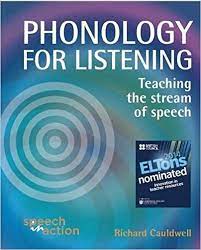
Author: Richard Cauldwell
This is the last book on listening, I promise! Well, in this list anyway. Again, like Field and Conti, Cauldwell is also critical of the comprehension approach to listening.
Phonology for Listening is designed to show teachers how to help their students decode rapid, informal spontaneous speech.
Cauldwell uses an extended vegetation metaphor to describe how words change in fast speech.
- The “garden” refers to the citation version of words you hear in dictionaries.
- The “greenhouse” refers to the rules of connected speech, which are useful for pronunciation.
- And finally “the jungle” refers to the unruly and messy world of spontaneous speech where pronunciation rules break down entirely.
The book comes with downloadable audio extracts to help you analyse spontaneous speech and understand the challenges it presents to your students.
24. How To Teach Grammar
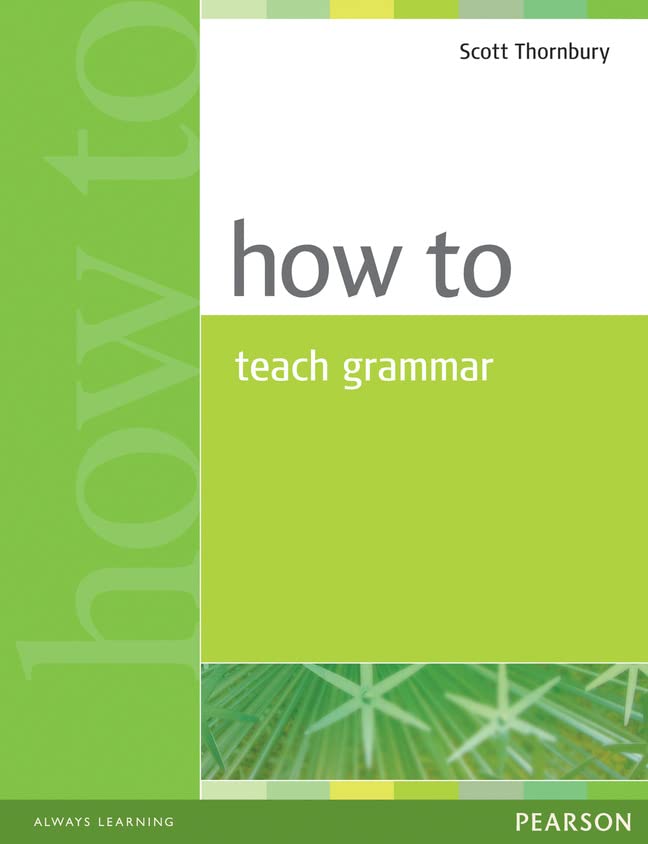
Author: Scott Thornbury
How to teach Grammar is part of a series of books by Scott Thornbury, one of my recommended ESL bloggers, that include “How to Teach Vocabulary” and “How to Teach Speaking”.
I’m focusing on this one though as how to teach grammar is a question that many ESL teachers have.
One of the most useful aspects of this book are the sample lessons which show how to teach grammar in context. In the book, Thornbury also explains how not to teach grammar!
Books For ESL Learners
Would you like your students to read more outside of class? Here are some books that you can encourage them to read and then discuss in your lessons.
25. Short Stories in English: Beginner
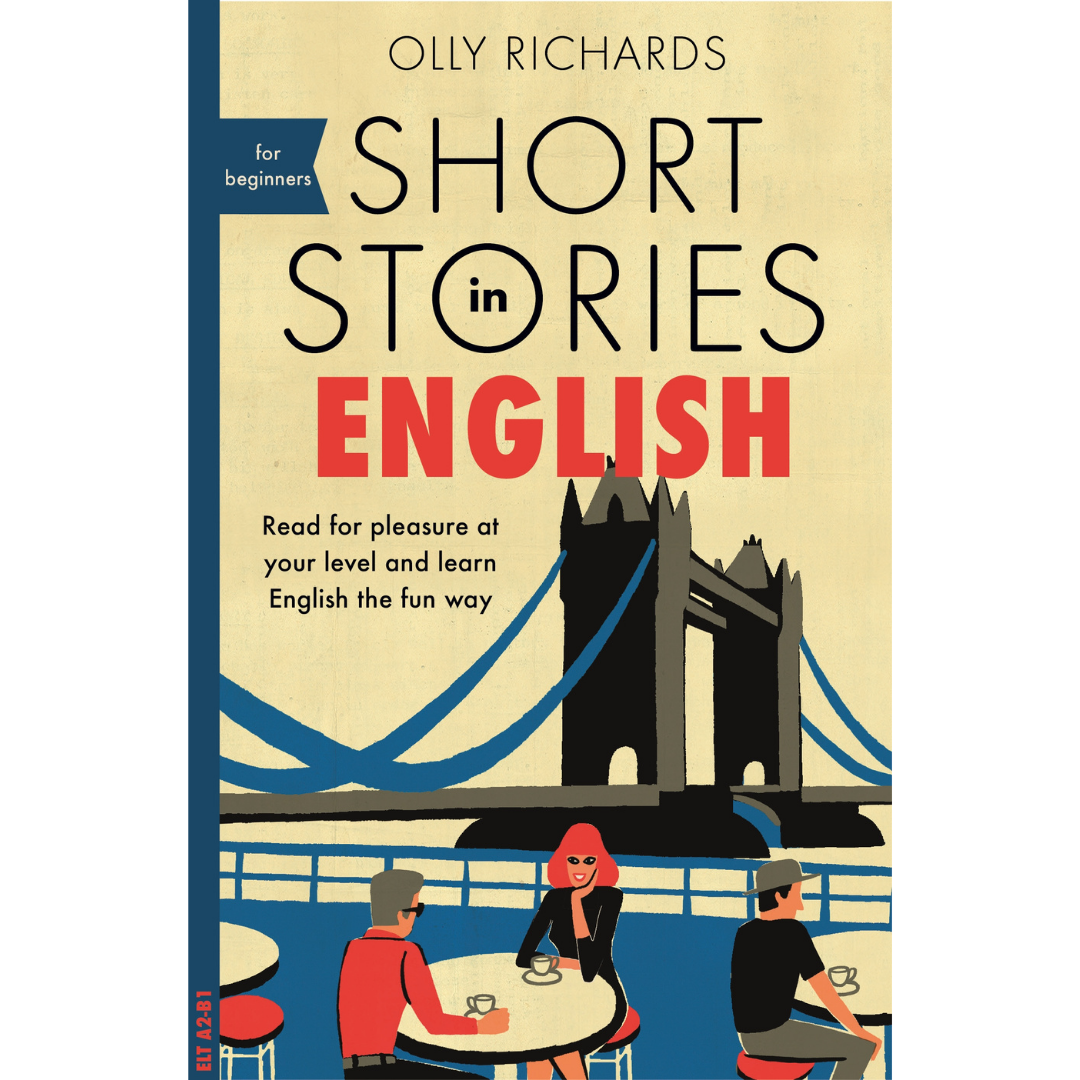
Short Stories in English for Beginners has been written especially for students from beginner to intermediate level, designed to give a sense of achievement, and most importantly – enjoyment!
Mapped to A2-B1 on the Common European Framework of Reference, these eight captivating stories will both entertain your students, and give them a feeling of progress when reading.
The book will give your learners eight stories in a variety of exciting genres, language at their level, authentic spoken dialogues plus accessible grammar to learn new structures naturally, in a stress-free way.
26. Short Stories In English: Intermediate
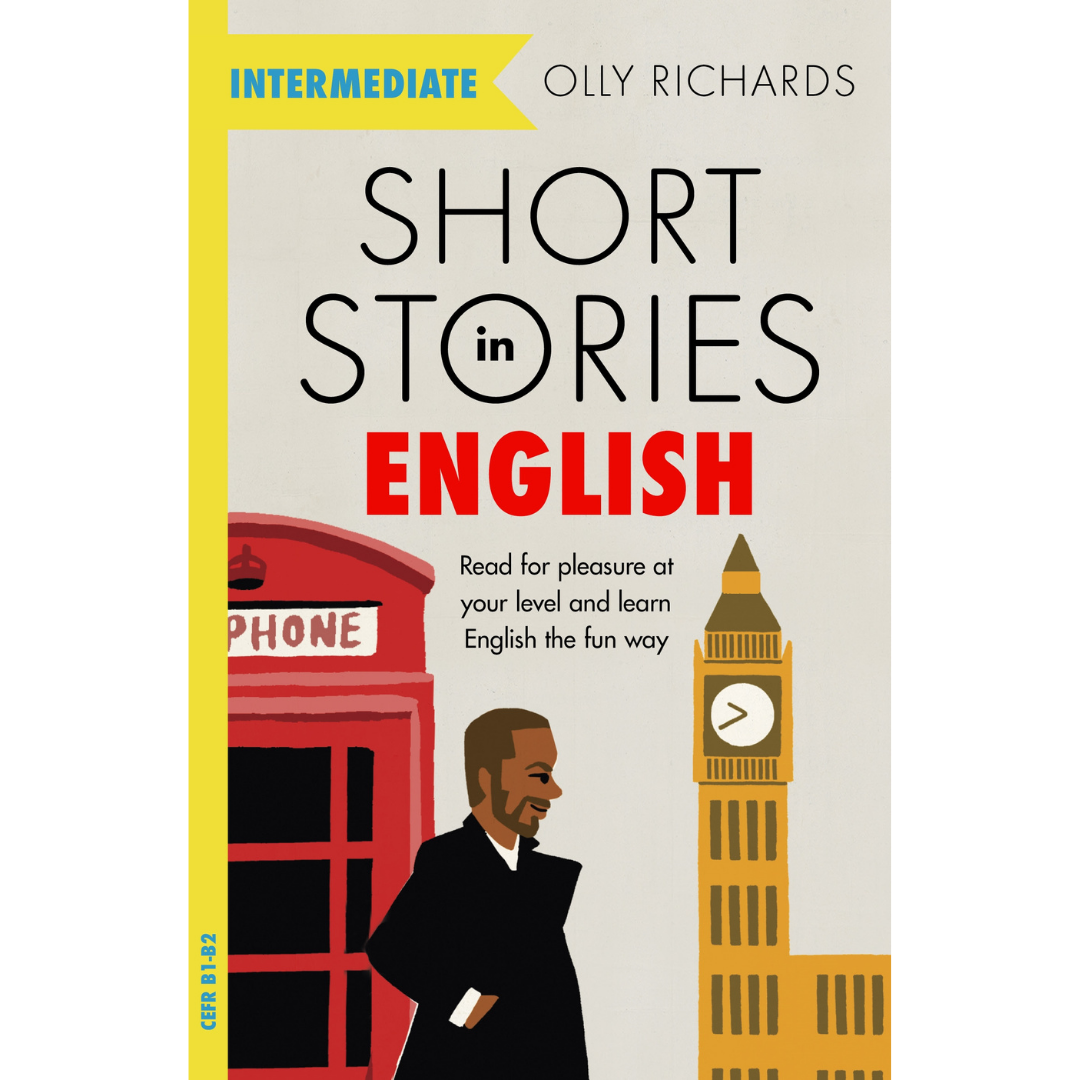
Similarly to the beginner book, these eight captivating stories will both entertain your students, and give them a feeling of progress when reading.
Carefully curated to make learning a new language easy, these stories include key features that will support and consolidate their progress, including:
- A glossary for bolded words in each text
- A bilingual word list
- Full plot summary
- Comprehension questions after each chapter.
As a result, your students will be able to focus on enjoying reading, delighting in their improved range of vocabulary and grasp of the language, without ever feeling overwhelmed or frustrated.
From science fiction to fantasy, to crime and thrillers, Short Stories in English for Intermediate Learners uses reading as the perfect tool to not only delight in learning English, but to start your learners' journey towards fluency.
27. Short Stories Teacher's Guide
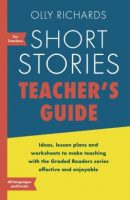
Not sure how to use my short story books with your students or in search of more inspiration?
In this Short Stories teacher’s Guide, you’ll find ideas, inspiration, and strategies for building reading skills in the classroom, as well as step-by-step pre-, while- and post-reading activities, complete with teaching suggestions and examples,
The Teacher's Guide also includes:
- adaptable, downloadable worksheet templates provided as Word documents that you can adjust to fit your student's language needs as well as the content for each story
- one audiobook version for the listening activities
- information on how to access activities on Quizlet
You'll be able to access this book from your Web browser or download it to the accompanying Teach Yourself Graded Readers app. You'll also be able to access the Word templates, which you can download to your computer to adapt, print and repurpose.
28. 101 Conversations In Simple English
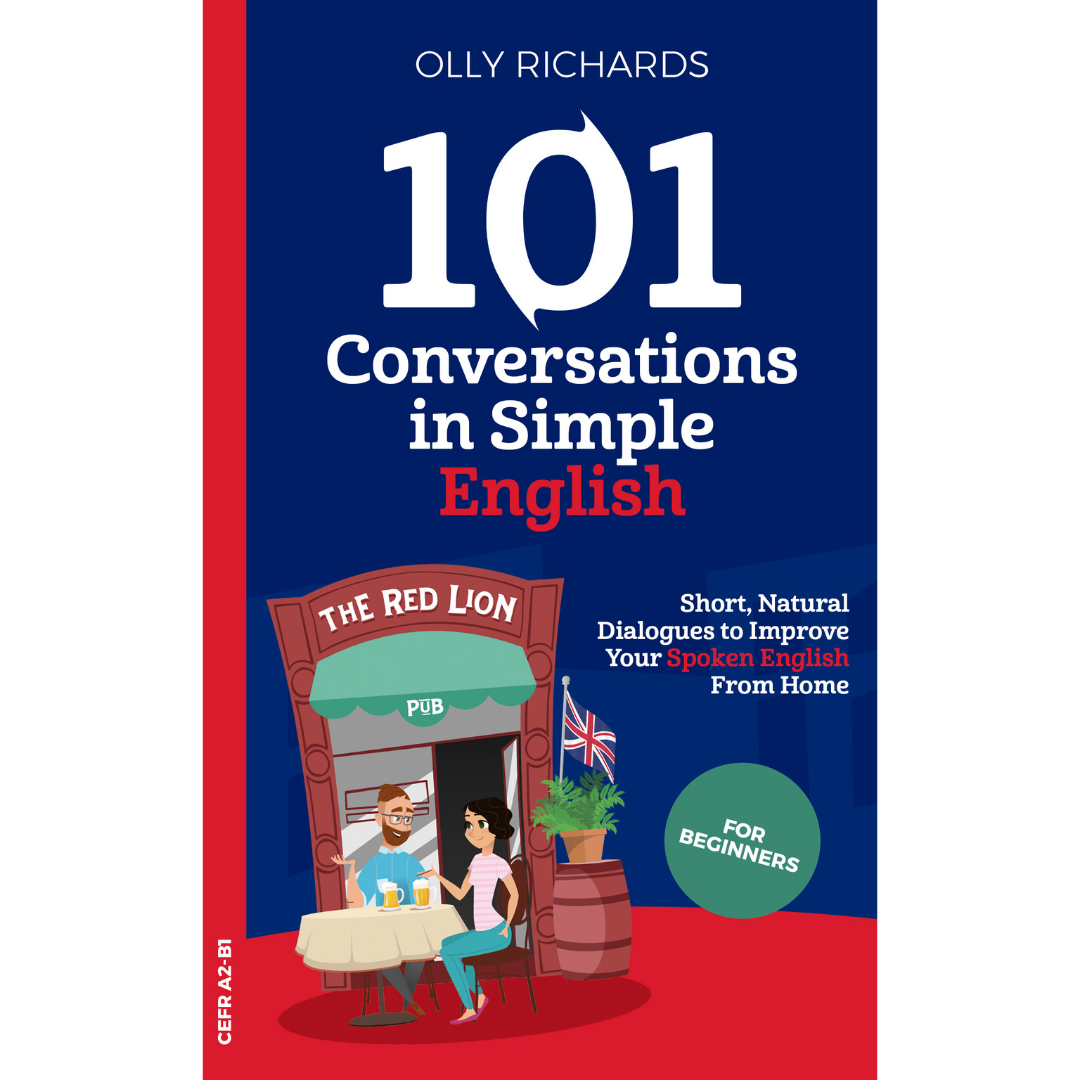
In 101 Conversations in Simple English your learners will learn to speak English in the REAL world, with 101 authentic conversations in simple, spoken English.
They'll be transported into a real-world story that unfolds between six characters, told by the people themselves in 101 authentic conversations.
In this story, two friends, Natalie and Alice, arrive in London for what they think will be a relaxing vacation exploring the city. Things, however, take an unexpected turn when they discover some vary valuable paintings in one of London’s antique markets
Each conversation is limited to around 15 lines of dialogue (150 words), so your learners can get that crucial sense of achievement and motivation when you finish each conversation, and say “I actually understood all of that!”
29. 101 Conversations In Intermediate English
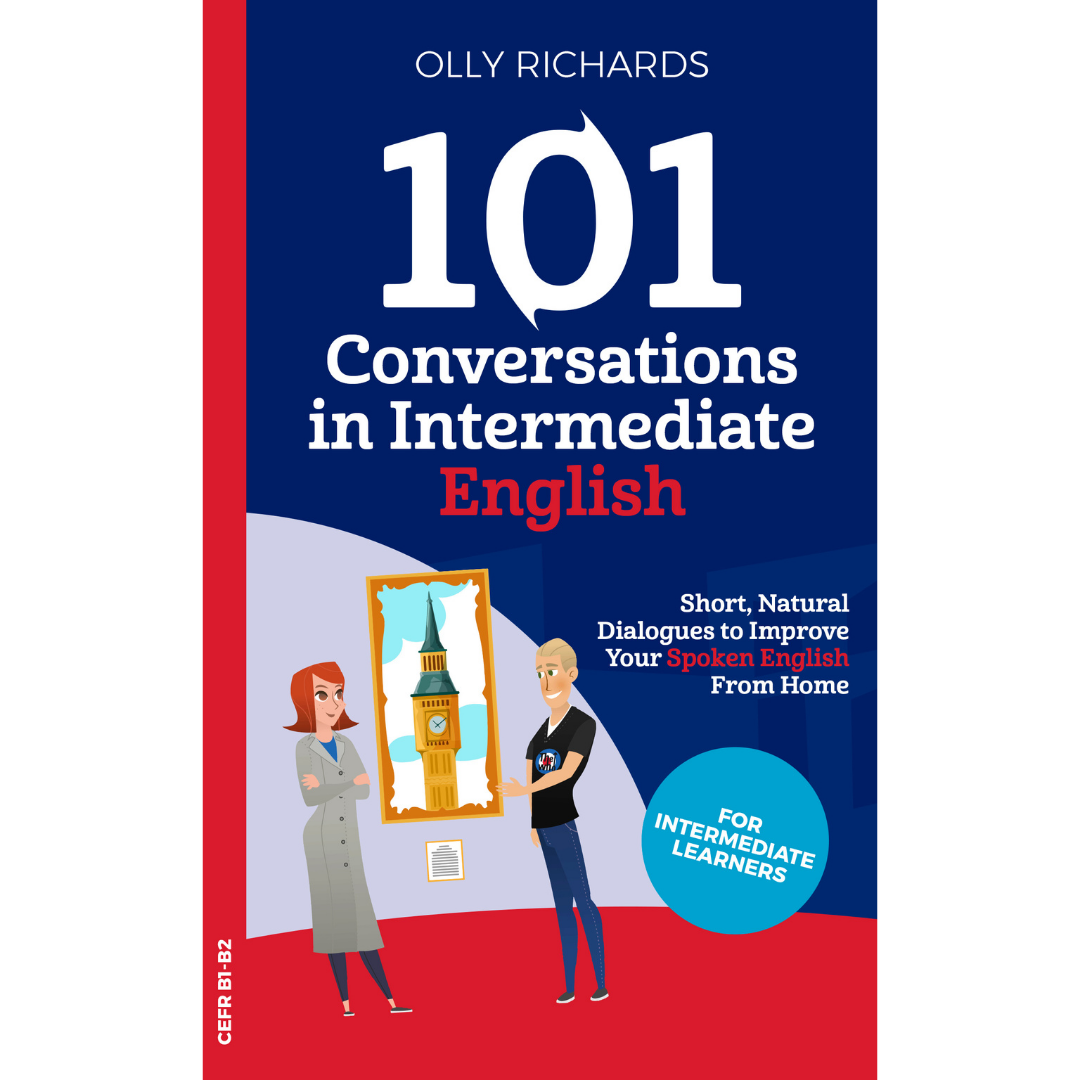
101 Conversations in Intermediate English is based on the same premise as the previous one, except that the 101 real-world conversations are in intermediate English (B1-B2 on the CEFR).
When a mysterious painting appears on the wall of the Tate Museum, Detective Laura Smith is called in to investigate.
Soon, she discovers that the painting is full of clues representing five different crimes that will be committed somewhere in London by the end of the day.
As they race around the city to stop this crime wave, more questions arise: Who is behind this network of organised crime? And who is trying to warn Detective Smith?
Choosing The Best ESL Books For You And Your Students
So there you have it – a comprehensive guide to the best ESL books.
Now you'll have ESL books for pretty much every scenario available – teaching young learners, teaching a complete course, teaching listening, helping students with their reading.
While this list is a great starting point, the best way to choose the right ESL books for you is to test drive a few. Many of the books on this list have downloadable sample chapters that you can find on the publishers' websites.
Ultimately, only you can know which ESL books will work best for your particular context and your learners. So don't be afraid to exercise discernment.
While recommendations can help, they're no substitute for your knowledge of your students and their needs.

Olly Richards
Creator of the StoryLearning® Method
Olly Richards is a renowned polyglot and language learning expert with over 15 years of experience teaching millions through his innovative StoryLearning® method. He is the creator of StoryLearning, one of the world's largest language learning blogs with 500,000+ monthly readers.
Olly has authored 30+ language learning books and courses, including the bestselling "Short Stories" series published by Teach Yourself.
When not developing new teaching methods, Richards practices what he preaches—he speaks 8 languages fluently and continues learning new ones through his own methodology.










































